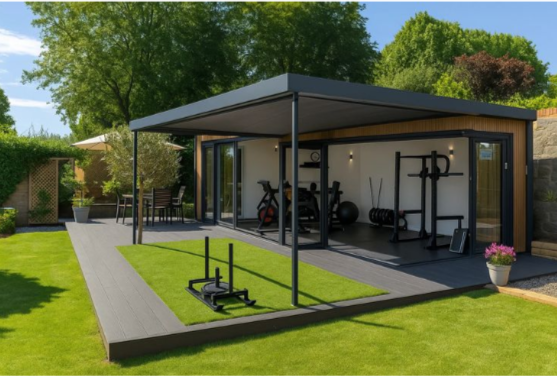Creating a sustainable landscape is no longer a niche trend. Homeowners are looking for gardens and yards that are beautiful, functional, and environmentally friendly. A well-designed landscape not only enhances the curb appeal but also reduces maintenance, conserves water, and supports local ecosystems. Sustainability in landscaping combines smart planning, plant choices, and modern techniques to create spaces that thrive year-round with minimal environmental impact.
Incorporating Xeriscaping Techniques
Xeriscaping is a landscaping method focused on reducing water use while maintaining a lush and inviting yard. It involves choosing drought-tolerant plants, efficient irrigation, and soil improvements to minimize water waste. By integrating xeriscaping principles, homeowners can create a beautiful garden that conserves resources and lowers utility bills. This approach works especially well in dry regions, and when combined with thoughtful plant placement, it delivers both aesthetic appeal and environmental benefits. Xeriscaping has become a key component of modern sustainable landscapes.
Optimizing Lawn Maintenance Service
Maintaining a traditional lawn can be resource-intensive, requiring frequent watering, mowing, and fertilizing. A professional lawn maintenance service can help homeowners achieve a well-manicured yard without overtaxing resources. By using eco-friendly practices and efficient scheduling, these services reduce water and chemical use while keeping lawns healthy. A modern lawn maintenance service often incorporates smart technology, such as soil moisture sensors and automated irrigation, to make sustainability easy. Partnering with experts ensures that your landscape remains vibrant and sustainable with minimal effort.
Choosing Native Plants For Sustainability
Native plants are naturally adapted to the local climate, which makes them resilient and low-maintenance. They require less water, fewer fertilizers, and minimal pest control, making them an ideal choice for sustainable landscaping. Native plants also support local wildlife, providing food and shelter for birds and pollinators. By designing around native species, homeowners can reduce dependency on artificial resources while creating a thriving, harmonious garden. Combining native plants with xeriscaping or other drought-tolerant strategies enhances the overall sustainability of the landscape.
Incorporating Water-Efficient Irrigation
Water-efficient irrigation systems are crucial in reducing overall water consumption. Drip irrigation, rain sensors, and smart timers allow precise watering tailored to plant needs. These systems minimize runoff and evaporation while ensuring each section of the garden receives just the right amount of water. When paired with xeriscaping or drought-resistant plants, water-efficient irrigation helps maintain lush landscapes without depleting natural resources.
Adding Multi-Functional Outdoor Spaces
Sustainable landscaping isn’t just about plants. Creating multi-functional outdoor spaces encourages homeowners to spend time outside while reducing environmental impact. Patios made from permeable materials, shaded seating areas, and edible gardens enhance usability and reduce hardscaped areas that trap heat. Integrating these spaces thoughtfully complements xeriscaping principles and reduces the overall footprint of maintenance-intensive areas. Such designs make modern landscapes practical, enjoyable, and ecologically responsible.
Enhancing Soil Health For Longevity
Healthy soil is the foundation of any sustainable landscape. Adding compost, mulch, and organic matter improves soil structure, retains moisture, and supports beneficial microorganisms. This reduces the need for chemical fertilizers and promotes strong plant growth. Lawn maintenance services can also focus on soil care, ensuring that plants, grass, and trees receive the nutrients they need naturally. Maintaining soil health is a long-term investment that makes any sustainable landscaping effort more effective and resilient.
Conclusion
Designing a sustainable landscape for modern homes blends beauty, function, and environmental responsibility. By incorporating xeriscaping, using native plants, optimizing lawn maintenance service, and implementing water-efficient techniques, homeowners can reduce their ecological footprint without sacrificing aesthetics. Multi-functional outdoor spaces and healthy soil further enhance the longevity and enjoyment of the garden.
